Domain Expert: Nathan Jacobi, Piper Center for Vocation and Career
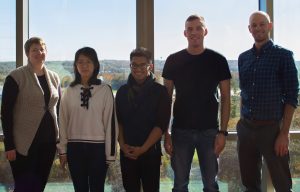
Title: Preparing for Life after St. Olaf
Description: Recent research related to the Gallup-Purdue Index suggests that students who participate in internships and other forms of deep, experiential learning are two times as likely to be engaged in their work, to thrive and to experience well-being later in life. In addition, graduates who visited their career services office and indicated that their interactions were “very helpful” are over five times more likely to say that their college or university prepared them well for life outside of college.
The Gallup-Purdue Index did not address demographics in the survey, and are we are concerned that that certain students, such as low income or first generation students, may not engage in career planning and experiential learning at the same rate as other students.
In this project, students will investigate trends and relationships related to engagement with the Piper Center, as well as participation in internships, research, and other forms of experiential learning. Specifically, students will explore the following questions: What are the characteristics of students who engage with the Piper Center for Vocation and Career and/or participate in internships, research, and other forms of experiential learning? And what are the characteristics of those who don’t? What is the relationship between involvement as a student and the types of work and educational study that students pursue after graduation? What are the characteristics of students who feel most prepared (or unprepared) for life after St. Olaf?
This research will help the Piper Center and others at St. Olaf better support all students in accessing meaningful career services and experiential learning.
Domain Expert: Chris Chapp, Department of Political Science
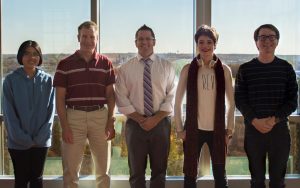
Title: Framing of Presidential Stump Speeches
Description: A good deal of scholarship has explored how political messages are framed. That is to say, what arguments and rhetorical devices do politicians use to strategically communicate about the issues of the day, with the goal of persuading voters? However, because content analysis of message framing is highly labor intensive, frames are often examined on a small datasets with limited generalizability and coder reliability problems. This project will remedy this gap, using an n-grams approach to identify specific issues in political speech and explore how these issues are framed. We will test this approach on a unique dataset of over 2000 presidential stump speeches ranging from 1952 – present. With this dataset, we will be able to examine (a) how the framing of political issues differs depending on issue type (i.e. domestic vs. foreign policy), (b) how the parties differ in their preferred issue-frames (i.e. GOP/Democrat differences), (c) how context influences issue frames (i.e. do candidates speak differently during economic recessions?), and (d) how prevalent political frames have changed over time.
Domain Expert: Diane Angell, Department of Biology
Title: Resource Use of Small Mammals on Prairies

Description: Today, a small fraction of the original tallgrass prairie remains in the United States. The loss of prairie has been followed by a decline in several small mammal species that rely on these habitats (e.g. prairie voles, Microtus ochrogaster, and harvest mice, Reithrodontomys megalotis). Since these species are currently considered species of special concern in Minnesota, understanding their diet may help us focus conservation efforts.
Although we cannot directly observe what these species are eating, we can infer diet by examining fur trimmed from animals that were live-trapped. As fur grows it records the signature of the foods that were consumed. We can analyze that fur to quantify the stable isotopes of both carbon and nitrogen. Carbon isotope ratios provide information on the kinds of plants these small mammals are consuming, while nitrogen isotopes provide information on the amount of animal matter in their diets.
Our goal is to examine this data set to explore differences that might exist from one species to another, from one kind of prairie to another, and from year to year.
Domain Expert: Laura Listenberger and Elodie Marlier, Department of Chemistry
Title: Increasing Persistence and Performance in Introductory Chemistry
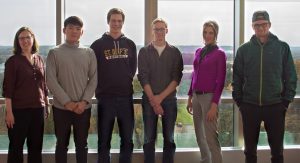
There is currently a national conversation about increasing participation and retention in science, engineering, technology, and mathematics (STEM fields) to meet an expanding demand for STEM trained workers in the US. Many students who enter college intending to pursue a major in STEM do not continue on this path. While some students discover a passion for an alternative field, others find the coursework challenging and lack confidence in their ability to proceed. Increased support in introductory classes may give more students the option to choose to major in a STEM field.
This project aims to identify specific course activities that impact interest and performance in Chemistry 121 and 125. We have designed a series of assignments and seek to determine (1) if completion of the assignments increase course performance, (2) if some populations of students are more impacted than others, and (3) if any benefits transfer to performance in other STEM courses. In addition to analyzing the data from the first year of the project, students will build the tools that will be used for analysis of future data sets. Thus, this project will help determine the best way to meet the needs of introductory STEM students.
Domain Expert: Anne Gothmann, Departments of Physics and Environmental Studies
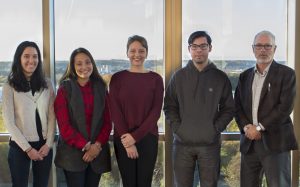
Title: Fossil coral and ocean carbon cycling
Description: Records of past climate and carbon cycling on Earth can help elucidate how Earth’s climate will evolve in the future. In order to construct such records, however, it is necessary to find robust archives and indicators of ancient environments. Recently, the uranium to calcium ratio (U/Ca) of fossil coral skeletons has been identified as a potential indicator (“proxy”) of past ocean carbon cycling. Laboratory experiments generally support the hypothesis that the U/Ca ratios of coral skeletons are sensitive to ocean carbon cycling, but other studies suggest that U/Ca in corals may depend on seawater temperature and coral species as well. Moreover, fossil coral U/Ca data may be compromised by the quality and geological history of samples. Because U/Ca ratios have been measured in numerous modern and fossil corals for a completely different purpose (as a byproduct of measuring the age of the coral sample) there are thousands of U/Ca measurements that have never been analyzed together for their relationship to ocean carbon cycling seawater temperature, or coral species.
We will test the hypothesis that fossil coral U/Ca can provide an indicator of past ocean carbon cycling by adding literature data to an existing data compilation of coral U/Ca ratios and by analyzing the full dataset. We will seek to determine the factors that are primarily responsible for observed variations in the U/Ca ratio of coral skeletons and to quantify the accuracy, precision, and limitations to using U/Ca as a proxy for past ocean carbon cycling.
Domain Expert: Anne Walter, Department of Biology
Title: Population interactions between predator and prey as a function of prey “quality”: Mathematical models meet experimental data.
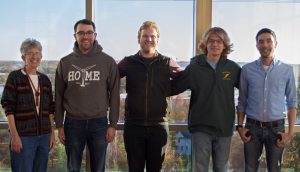
Description: Human activities alter elemental nutrient cycling, which can have profound impacts on agriculture, grasslands, lakes, and other systems. It is becoming increasingly clear that enhanced nitrogen and phosphorus levels can affect population dynamics across a range of taxa. For example, evidence has shown that high ratios of nutrients and light may limit the growth of planktonic herbivores by diminishing the nutritional quality of algae. However, there are few mathematical models that explicitly incorporate nutrients into population dynamics and even fewer opportunities for students to experience this connection hands-on in the classroom.
Using Daphnia (predator) and algae (prey), we will conduct experiments where nutrient concentrations and environmental conditions are manipulated to change the nutrient ratios of the algae for which the daphnia will feed on. Data will be collected that will be used to calibrate mathematical models. In addition, we plan to use our results to design a new lab for the core course to the mathematical biology concentration, The Mathematics of Biology (Math 236).
You must be logged in to post a comment.